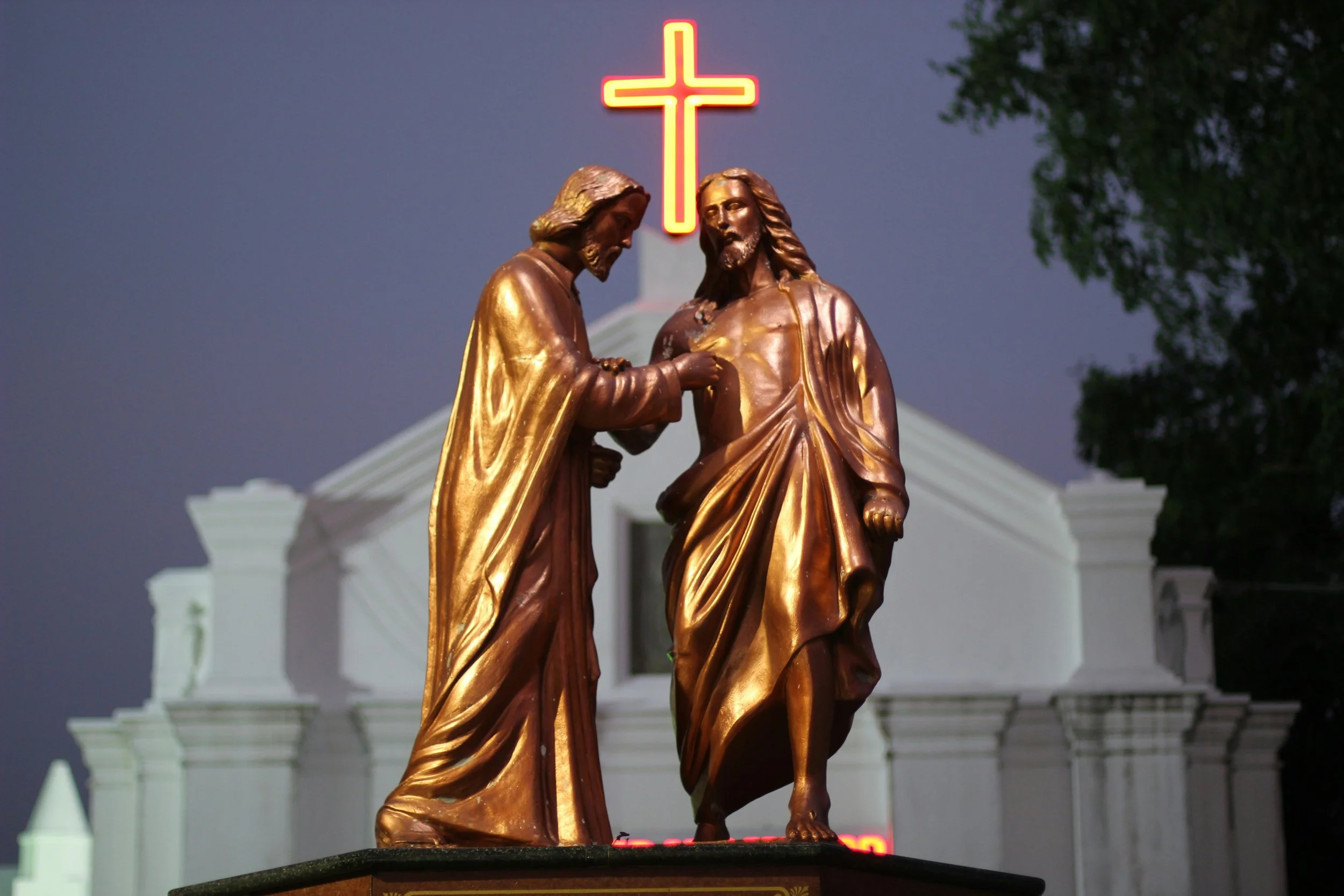Doubting Thomas: A Disciple for a Digital Age
Photo by Paul Yonggicho on Unsplash
Does Thomas receive more air time in sermons than any other disciple? Those who attend church each Second Sunday of Easter might think so. Every Second Sunday of Easter, preachers who use the lectionary draw upon the twentieth chapter of John, where they encounter Thomas and his proclamation of doubt. It’s this consistent place on the homiletical rotation that leads me to believe that Thomas gets the most word count of any of Christ’s followers. I’ve heard more preaching on Thomas than on Peter or Judas, more said about his frame of mind than that of the apostle Paul. He receives considerable attention for a figure who is mostly absent from the Gospels of Mark, Matthew, and Luke, whose place in the synoptic Gospels is relegated to the lists of the disciples. I find it interesting not just that Doubting Thomas is a regular presence in sermons, but also that the way we preach on Thomas has changed dramatically in a relatively short span of time.
St. Thomas, who converted from doubt to belief when the resurrected Christ physically appeared to him, has undergone something of a conversion in the last two to three decades. As I grew up in the Lutheran church, I heard pastors tend to denigrate the disciple for his lack of faith. Don’t be like Thomas - they would suggest. His belief was shakeable. His faith depended on signs. He needed convincing. In the late twentieth century, Doubting Thomas was the antithesis of faith in Christ.
But that’s generally not how I hear Thomas described today. More recently, I’ve heard preachers treat Thomas with greater empathy, identifying the parallels between Thomas and our own ability to trust in the resurrection. Perhaps this updated portrayal is the implicit result of mainline Protestant congregations experiencing declines in attendance, membership, and perhaps in homiletical confidence. It could be a byproduct of increased secularization, which makes doubt more plausible and even laudable. Or it could be a change in how the Gospels are taught in classrooms in seminaries. Whatever the cause, today’s mainline Protestant preachers have replaced Thomas the antagonist with Thomas the approachable and affable agnostic. We have converted Thomas from cautionary tale to exemplar. In this liturgical Easter season, I suspect that many more preachers will laud him for his willingness to publicly discuss his disbelief, than will shame him for his resurrection recalcitrance.
Let me say for the record that I am a member of Team Thomas. In a secular age where faith is constantly contested, I appreciate that we hear an annual reminder that even those closest to Jesus of Nazareth struggled to believe. Today more than ever, Thomas can be a role model for those who recognize that doubt is an essential attribute of faith.
There’s one specific aspect of Thomas that is particularly promising for today’s proclamation. We live in a culture where we are almost too quick to believe - not in God, not in Christ - but in what we see and read online. In tweets, memes, and TikTok videos, we’re all prone to believing, without verification, to placing our faith in untrustworthy sources. A 2023 survey conducted by UNESCO and Ipsos found that 56% of people worldwide regularly use social media as a source to learn about current events - despite 68% of respondents expressing concerns about the veracity of what they find on platforms like Meta, X, and TikTok. Put another way, we know much of what we read and watch online is bogus, yet we keep consuming it anyway. All of us, at one time or another, believe misinformation.
When Thomas says “I will not believe,” he is expressing a healthy degree of uncertainty and skepticism over claims that appear outlandish. Could the other disciples really have seen the Lord, when he had been laid in the tomb just days before? Surely, Thomas can be forgiven, even lauded, for wanting visual, tactile, and concrete evidence in support of this miraculous possibility.
In this digital age, we would all do well to develop a more robust informational filter. Artificial intelligence will only exacerbate the problem of online misinformation, accelerating the pace with which distortions and fabrications spread through our society. We would all do well to be more like Doubting Thomas, the disciple who questioned, then scrutinized, before ultimately arriving in a place of faith. Not just with the news but through all domains of our digital lives, Thomas is a disciple for times like these.
Surely there is a pulpit somewhere where a preacher is condemning Thomas for refusing to believe without seeing. Surely there are congregants that are nodding their heads in agreement. But on the Second Sunday of Easter, I’ll always have a different reaction to St. Thomas. In my head, I’ll be applauding his healthy degree of scrutiny and give thanks for Doubting Thomas, a disciple for a digital age.

